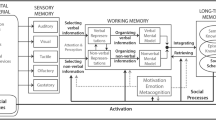Abstract
Multimedia systems design generally requires a collaborative effort from a group of designers with a variety of backgrounds and tasks, such as content experts, instructional designers, media specialists, users, and so forth. However, currently available design tools on the market are mainly designed for a single user. Tools intended to support a collaborative design process should coordinate independent activities of individual designers.
This research investigated support for work groups engaged in designing multimedia systems. Specifically, it discussed a new collaborative design environment, called the KMS (Knowledge Management System)-based design environment, in which multimedia designers could share their design knowledge freely. Through two experimental groups, the research investigated impacts of the KMS-based design environment on their collaborative design activities (knowledge creating, knowledge securing, knowledge distributing, and knowledge retrieving activities). The research findings showed that the KMS-based design environment was a promising environment for collaborative multimedia systems design. More specifically, the research findings indicated that the KMS-based design environment supported creating, securing, and retrieving knowledge, but it did not support distributing knowledge. In addition, the research found that the social interactions between group members played important roles in the success of the collaborative multimedia systems design and that the KMS-based design environment did not support the socialization of group members. Furthermore, the research found that the inability of the KMS-based design environment to support the socialization was linked to its low performance level in supporting the knowledge distributing activity. The research explored the desired features of a collaborative support tool for multimedia systems design.
Similar content being viewed by others
References
A.F. Alber, Multimedia: A Management Perspective, Wadsworth Publishing: Belmont, CA, 1996.
B.L. Chapman, “Accelerating the design process: A tool for instructional design,” White Paper of Designer' Edge, Allen Communication, 1995.
R.F. Dyer and E.H. Forman, “Group decision support with the analytic hierarchy process,” Decision Support Systems, pp. 99–124, 1992.
E. England and A. Finney, Managing Multimedia, Addison-Wesley: NY, 1996.
Expert Choice. User Manual, Decision Support Software, Inc., McLean, VA, 1986.
K. Harada, E. Tanaka, R. Ogawa, and Y. Hara, “Anecdote: A multimedia storyboarding system with seamless authoring support,” in Proceeding of ACM Multimedia, 1996.
T. Isakowitz, E.A. Stohr, and P. Balasubramanian, “RMM: A methodology for structured hypermedia design,” Communications of the ACM, Vol. 38, No. 8, pp. 34–44, 1995.
R.T. Keim, A. Kagan, and G. Post, “MASET: Multi-attribute software evaluation tool,” in Proceedings of the AIS Conference, 1997.
K. Kiddoo, “Discovering the rules: Initiative and teamwork in multimedia project design,” Multimedia Review, Vol. 3, No. 4, pp. 46–51, 1992.
J. Korpela and M. Tuominen, “Benchmarking logistics performance with an application of the analytic hierarchy process,” IEEE Transactions on Engineering Management, Vol. 43, No. 3, pp. 323–333, 1996.
J. Liebowitz, “Determining functional requirements for NASA goddard' command management system software design using expert systems,” Unpublished Doctoral Dissertation, Engineering Management Department, George Washington University, 1985.
J. Liebowitz and L. Wilcox (Eds.), Knowledge Management and Its Integrative Elements, CRC Press: Boca Raton, 1997.
J.A. Lnaday and B. Myers, “Sketching storyboards to illustrate interface behaviors,” in Proceedings of CHI 96, 1996.
N.A.M. Maiden, C. Ncube, and A. Moore, “Lessons learned during requirements acquisition for COTS system,” Communications of the ACM, Vol. 40, No. 12, pp. 21–25, 1997.
M.T. Maybury, Intelligent Multimedia Interfaces, MIT Press: Cambridge, MA, 1993.
I. Park and M.J. Hannafin, “Empirically-based guidelines for the design of interactive multimedia,” Educational Technology Research and Development, Vol. 41, No. 3, pp. 63–85, 1993.
R. Ramanathan and L.S. Ganesh, “Group preference aggregation methods employed in AHP: An evaluation and an intrinsic process for deriving members' weightages,” European Journal of Operation Research, Vol. 79, pp. 249–265, 1994.
T. Saaty, The Analytic Hierarchy Process, 2nd ed., RWS Publications: Pittsburgh, PA, 1990.
A.P. Sinha and J.H. May, “Providing design assistance: A case-based approach,” Information Systems Research, Vol. 7, No. 3, pp. 363–387, 1996.
R. Spek and A.L. Spijkervet, “A methodology for knowledge management,” in Tutorial Notes of The 3rd World Congress on Expert Systems, Seoul, Korea, 1996.
D. Straub, “The effect of culture on IT diffusion: E-mail and Fax in Japan and the US,” Information Systems Research, Vol. 5, No. 1, pp. 23–47, 1994.
N.A. Streitz, “Designing collaboration environments based on the common ground of hypermedia and CSCW,” in Tutorial Notes of The Seventh ACM Conference on Hypertext, 1996.
L. Tway, Welcome to Multimedia, Management Information Source Press, New York, NY, 1992.
R.C. Van Den Honert and F.A. Lootsma, “Group preference aggregation in the multiplicative AHP: The model of the group decision process and preto optimality,” European Journal of Operation Research, Vol. 96, pp. 363–370, 1996.
D.B. Walz, J.J. Elam, and B. Curtis, “Inside a software design team: Knowledge acquisition, sharing, and integration,” Communications of the ACM, Vol. 36, No. 10, pp. 63–77, 1993.
D.B. Walz, J.J. Elam, H. Krasner, and B. Curtis, “A methodology for studying software design teams: An investigation of conflict behaviors in the requirements definition phases,” in Empirical Studies of Programmers, Vol. 2, G. Olson, E. Soloway, and S. Sheppard (Eds.), Albex: Norwood, NJ, 1987, pp. 83–99.
Author information
Authors and Affiliations
Rights and permissions
About this article
Cite this article
Baek, S., Liebowitz, J. & Lewis, M. An Exploratory Study: Supporting Collaborative Multimedia Systems Design. Multimedia Tools and Applications 12, 189–207 (2000). https://doi.org/10.1023/A:1009619724484
Issue Date:
DOI: https://doi.org/10.1023/A:1009619724484




